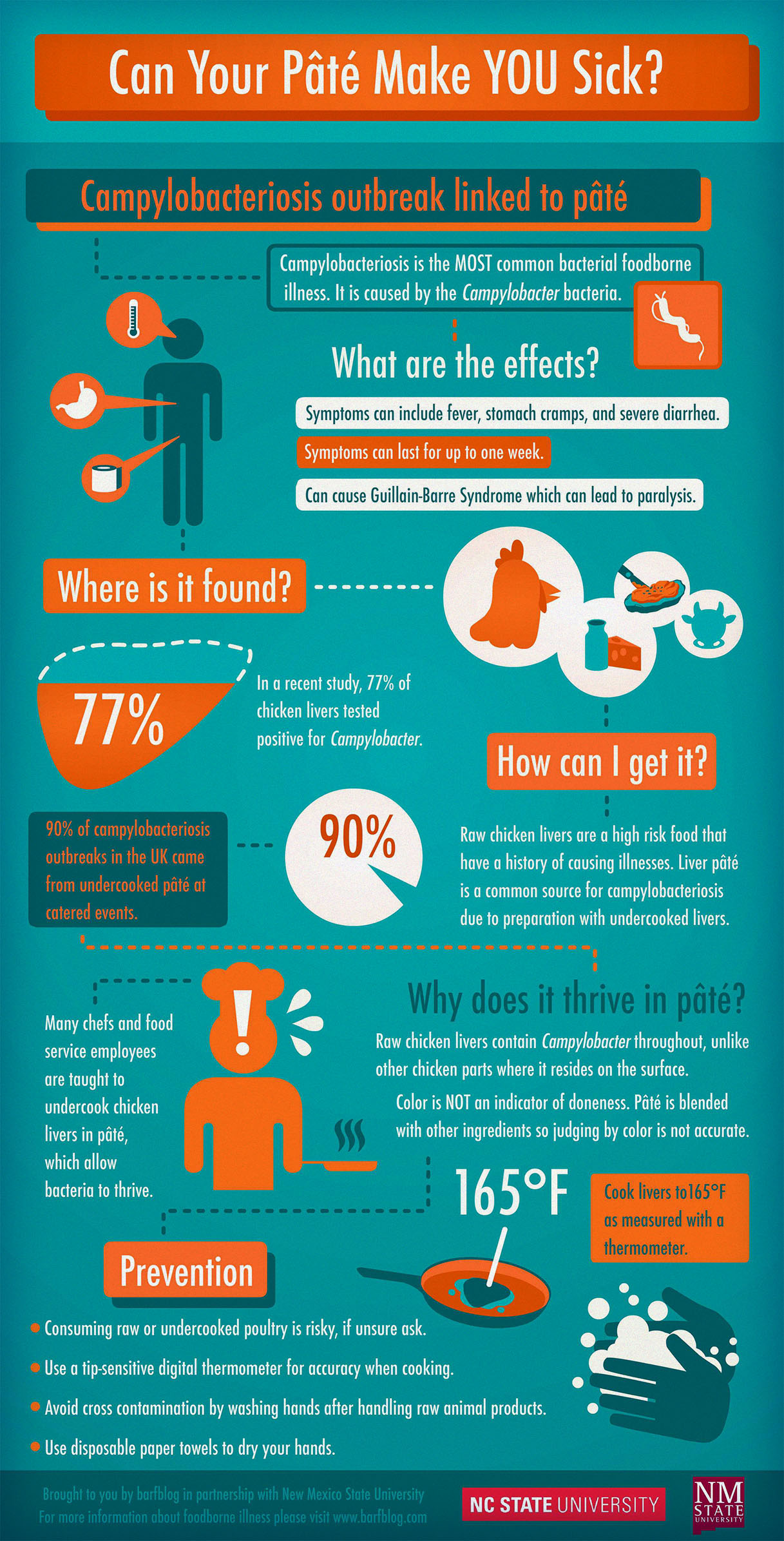Good luck with that.
 Most people undercook chicken liver because they follow food porn bullshit on cooking shows (yes, we did that research 15 years ago, see below
Most people undercook chicken liver because they follow food porn bullshit on cooking shows (yes, we did that research 15 years ago, see below
FSIS is issuing this guideline to promote a reduction in pathogens in raw chicken liver products and to promote thorough cooking of these products.
Similar to other raw poultry products, chicken liver can be contaminated with pathogens such as Campylobacter and Salmonella. Surface contamination can result from insanitary dressing procedures, as well as from the processing environment.
In addition to surface contamination, chicken liver can contain pathogens internally, even when chickens are dressed in a sanitary manner. Studies have demonstrated the presence of Campylobacter in the internal tissue of between 10% and 90% of tested chicken livers after the external surface was sanitized (Boukraa et al., 1991; Barot et al., 1983; Baumgartner et al., 1995; Firlieyanti et al., 2016; Whyte et al., 2006). Additionally, researchers have detected Campylobacter and Salmonella in the liver of chickens previously free of these pathogens after experimental oral inoculation (Chaloner et al., 2014; Knudsen et al., 2006; Sanyal et al., 1984; Borsoi et al., 2009; Gast et al., 2013; He et al., 2010). Pathogens are thought to spread from the intestine to the internal liver tissue via the biliary, lymphatic, or vascular systems, although the exact route is unclear.
Some recipes for chicken liver dishes, such as pâté, instruct the preparer to only partially cook the liver (e.g., by searing). Partial cooking may kill pathogens on the external surface, but will likely not kill all pathogens in the internal tissue. Any internal pathogens that survive in products made from inadequately cooked chicken liver could make consumers sick. Inadequate cooking was a contributing factor in many of the reported illness outbreaks associated with chicken liver.
The main message for food preparers at retail food outlets and foodservice entities and at home is that chicken liver dishes, like all poultry products, should be consumed only after being cooked throughout to a safe minimum internal temperature of 165 °F (73.9 °C) as measured with a food thermometer (Food Code,3-401.11).
That’s a little clearer than piping fucking hot, UK idiots.
For food safety reasons, this should be done regardless of preferences. In addition, with respect to storage, FSIS recommends using chicken liver within one to two days if stored in a refrigerator set at 40 °F or below, or within three to four months if frozen at 0 °F or below.
Mathiasen, L.A., Chapman, B.J., Lacroix, B.J. and Powell, D.A. 2004.
Spot the mistake: Television cooking shows as a source of food safety information, Food Protection Trends 24(5): 328-334.
Consumers receive information on food preparation from a variety of sources. Numerous studies conducted over the past six years demonstrate that television is one of the primary sources for North Americans. This research reports on an examination and categorization of messages that television food and cooking programs provide to viewers about preparing food safely. During June 2002 and 2003, television food and cooking programs were recorded and reviewed, using a defined list of food safety practices based on criteria established by Food Safety Network researchers. Most surveyed programs were shown on Food Network Canada, a specialty cable channel. On average, 30 percent of the programs viewed were produced in Canada, with the remainder produced in the United States or United Kingdom. Sixty hours of content analysis revealed that the programs contained a total of 916 poor food-handling incidents. When negative food handling behaviors were compared to positive food handling behaviors, it was found that for each positive food handling behavior observed, 13 negative behaviors were observed. Common food safety errors included a lack of hand washing, cross-contamination and time-temperature violations. While television food and cooking programs are an entertainment source, there is an opportunity to improve their content so as to promote safe food handling.





 • Contaminated "kosher broiled chicken livers" were recalled from grocery stores but may still be in consumers’ homes.
• Contaminated "kosher broiled chicken livers" were recalled from grocery stores but may still be in consumers’ homes..jpg) PFGE pattern associated with this outbreak commonly occurs in the United States, some of the cases with this pattern may not be related to this outbreak. Based on the previous 5 years of reports to PulseNet, approximately 30-40 cases with the outbreak strain would be expected to be reported per month in the United States. The outbreak strain is different from another strain of Salmonella Heidelberg associated with ground turkey recalled earlier this year.
PFGE pattern associated with this outbreak commonly occurs in the United States, some of the cases with this pattern may not be related to this outbreak. Based on the previous 5 years of reports to PulseNet, approximately 30-40 cases with the outbreak strain would be expected to be reported per month in the United States. The outbreak strain is different from another strain of Salmonella Heidelberg associated with ground turkey recalled earlier this year..jpg)
.jpg) were linked to consuming poultry liver parfait or pâté.
were linked to consuming poultry liver parfait or pâté. .jpg) hot all the way through. The centre should reach a temperature of 70°C for two minutes or the equivalent time and temperature.
hot all the way through. The centre should reach a temperature of 70°C for two minutes or the equivalent time and temperature.